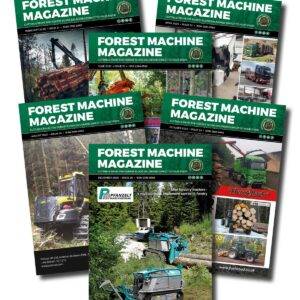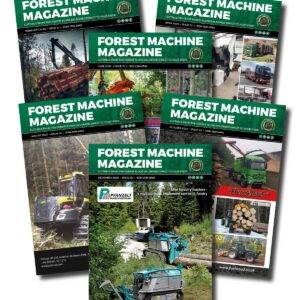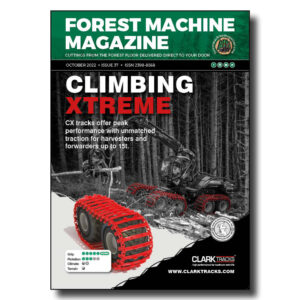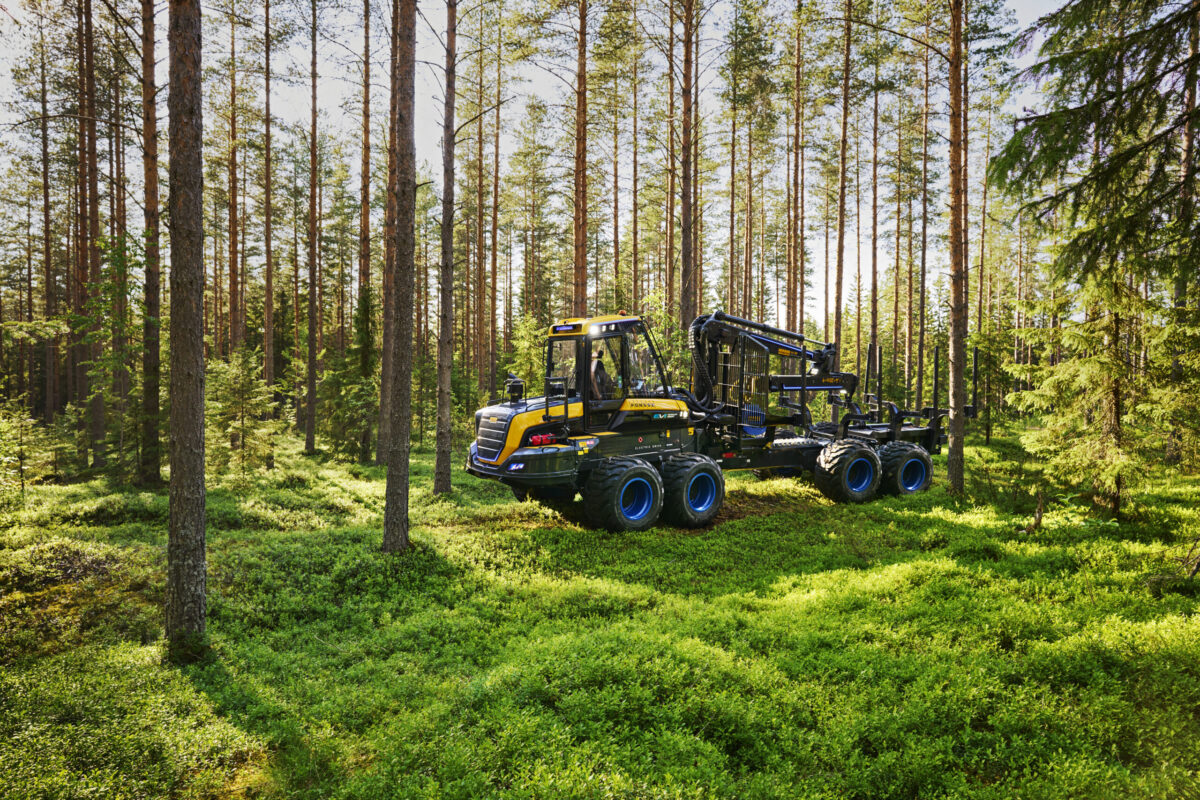Upon publishing the company’s latest press release about the new fully electric powered PONSSE 15 tonne capacity EV1 forwarder, I wasn’t too surprised by the negative comments. I was met by the “where do you expect to find charging points in the forest” brigade or the ones that had read the press release saying, “what’s the point of it if it needs a diesel engine to re-charge itself.”
Reading the information prior to the launch, I was intrigued as to how this technology would work. I personally thought that the only electric motor battery powered machines we would see working in forestry would be small scale and lightweight forestry equipment like the Alstor and Malwa. I couldn’t grasp how this was going to work effectively on larger forestry equipment so I started to do some digging to find out about the company behind the technology who were involved with PONSSE on this project.
Firstly, Epec Oy is a Finnish technology company and is 100% owned by PONSSE. Epec specialize in embedded control systems, vehicle computers, and information systems for mobile machines which are used in rough terrain and challenging conditions. The company was established in 1978 and their diverse experience is based on long term cooperation with leading international OEM’s in different sectors. The strength of the company is the combination of innovative and reliable products and services, the command of recent technology, extensive project management and service experience from different types of applications and operating environments.
The new PONSSE EV1 features Epec Flow, Epec’s electromobility system solution. The solution is based on the Epec Flow Power Distribution Unit (PDU), to which electric motors, batteries and various devices can be connected. The PDU’s integrated safety solutions enable effective manufacturing and maintenance of the machines, as well as their operations in demanding conditions. The Epec Flow Hybrid Control Unit (HCU) controls the electric powertrain and includes software developed through simulations, enabling optimal energy consumption, productivity, and usability.
I had the opportunity to interview PONSSE’s President and CEO Juho Nummela and Epec Managing Director Jyri Kylä-Kaila to find out more about how this system works.
Firstly, the technology does work. The prototype machine has been undergoing successful trials in the forest for some time now and it has taken three years of development to reach this point. The 15-tonne forwarder is the most popular size of machine that PONSSE make and the perfect starting point for their first electrically motor driven forest machine.
This EV1 has a smaller 150kW output Mercedes diesel motor than the usual 210kW a PONSSE Buffalo Forwarder would use. The diesel engine is called a range extender and is only operational about 50% of the
working day. The engine is coupled to a 100kW generator and inverter for charging the 31.5kW/hr battery which is installed in the rear frame. The battery supplies power to two separate inverters and motors which supply drive to the front and rear NAF bogies, there is no mechanical connection from the engine to the wheels. The forwarder will work on the battery alone for 30-45 minutes, depending on the ground conditions. Once it is depleted
to 40%, the range extender starts automatically and charges it back up to 80%, before switching itself off. This takes around 15-20 minutes of engine running time to charge. In addition to the diesel engine there is a charging point on the EV1 for an external power source. The EV1 has been tested in extreme hot and cold environments for battery efficiency and both Ponsse and Epec are delighted with the results.
-
That’s a remarkable amount of work hours for a single machine, the Norcar 600 owned by Erkki Rinne is taken well care of, it even has the original Diesel engine.
-
Kieran Anders is a forestry contractor working in the lake district. His work involves hand cutting and extracting timber using a skidder and tractor-trailer forwarder.
-
It is not possible to eliminate chain shot, but there are simple steps that can be taken to reduce the risk.
-
Arwel takes great pride in the fact that the mill has no waste whatsoever, “the peelings are used for children’s playgrounds, gardens and for farm animals in barns in the winter and the sawdust has multiple uses in gardens and farms as well.
-
Timber hauliers need to encourage young blood in, and also look after the hauliers we have, we need make the sector a safe and positive place to work.
FIND US ON
Related Posts
During testing, the operators who have been trialling the EV1 have commented on how responsive the crane is. Juho explained that the hydraulics are powered by an electric motor which eliminates many of the components a mechanical system requires. This has resulted in the hydraulic system being far more receptive. With less moving parts this increases reliability and requires less maintenance.
The EV1 prototype has achieved a fuel saving of 20% over the same sized diesel engine forwarder but the electric motors offer a significant increase in horsepower with a much higher level of performance.
This is just the start of PONSSE’s journey with electrification and we must look past the diesel range extender engine which is being used in this prototype. The companies are looking at other cleaner alternative sources, such as hydrogen, sustainable fuel, and fuel cells, for generating recharging power.
The software and technology that has been developed and integrated into EV1 is the breakthrough. This has set new standards for forest machine manufacturers and put PONSSE on the map as a forestry machine manufacturer who is pulling out all the stops for a cleaner future. PONSSE is dedicated to sustainable forestry and look to be carbon neutral in their operations and solutions. The Finnish machine manufacturer is 100% committed to “cut to length logging operations”.
The mid-range forwarder was the perfect starting point for testing that the technology could work, and, in the future, they will be looking at ways to integrate it into their other CTL equipment. There are factors still being worked on, this forwarder is a bit heavier than a standard Buffalo, so Ponsse are looking at ways to decrease the weight. Pricing at the moment is difficult to assess but the price of ownership will play a big part in estimating the final cost to customers.
A big part of PONSSE’s DNA has always been radical innovation, the Scorpion harvester is testament to that. The company have a long-term outlook with a programme of continuous development and speaking to Juho and Jyri it was clear how excited they were about this latest breakthrough. More protypes will be built and sent out to forests worldwide for continued testing, the harvester is also in the development stages but, with more electrical components it is technically a lot more complex.
Jyri is excited about the future “Epec and PONSSE have a great working relationship and developing the successful software for this project has been our biggest challenge, the EV1 forwarder is much more complex compared to other off-road equipment. This is a starting point for us to learn and move forward towards our goal of carbon neutrality. Epec, although owned by PONSSE has over 200 OEM customers worldwide.”
Being able to electrify equipment in remote forest locations has been the biggest challenge facing the industry, but this is a giant step in the right direction.
www.ponsee.com
Forest Machine Magazine is written and edited by a forest professional with over 40 years hands on experience. We are dedicated to keeping you informed with all the latest news, views and reviews from our industry.
To support us you can subscribe to our bi-monthly magazine which is delivered to your door from only £30 per year.
Subscribe here
#homeoflogging #writtenbyloggersforloggers #loggingallovertheworld
-

 1 Year Subscription£0.00
1 Year Subscription£0.00 -

 2 Year Subscription£0.00
2 Year Subscription£0.00 -

 Issue 37£6.00
Issue 37£6.00 -

 Sustainable Logging: Powering The Planet T-Shirt£17.50 – £20.00
Sustainable Logging: Powering The Planet T-Shirt£17.50 – £20.00 -

 Sustainable Logging: Powering The Planet Hoodie£33.00 – £36.00
Sustainable Logging: Powering The Planet Hoodie£33.00 – £36.00

